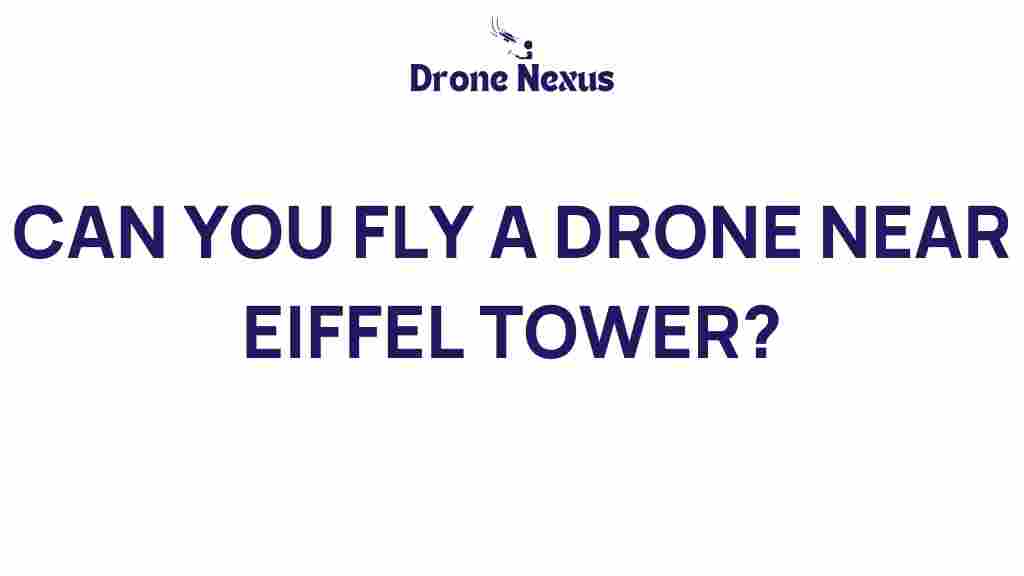Can You Legally Fly a Drone Near the Eiffel Tower? Discover the Rules!
If you’re planning a visit to Paris and dreaming of capturing stunning aerial photographs of the iconic Eiffel Tower, you might be wondering, “Can I legally fly a drone near the Eiffel Tower?” While drones are rapidly gaining popularity among tourists and photography enthusiasts, understanding the drone regulations in France, especially around such a historic landmark, is crucial. This article will guide you through the essential rules, steps to follow, and tips to ensure a hassle-free experience while flying your drone.
Understanding Drone Regulations in France
Before we dive into the specifics regarding the Eiffel Tower, it’s important to have a clear understanding of drone regulations in France as a whole. The French Civil Aviation Authority (DGAC) governs the use of drones, and there are specific rules that every drone pilot must abide by:
- Drone Registration: All drones weighing over 800 grams must be registered with the DGAC.
- Pilot Certification: Pilots must complete an online training course and obtain a certificate for drones over 800 grams.
- Flight Altitude: Drones cannot fly above 150 meters (approximately 492 feet) unless authorized.
- No Fly Zones: Certain areas, like airports and government buildings, are prohibited for drone flights.
The Eiffel Tower: A Special Case
The Eiffel Tower, being one of the most recognizable structures in the world, has its own set of drone regulations. Here’s what you need to know:
- Prohibited Zone: Flying drones within a 5 km radius of the Eiffel Tower is strictly prohibited. This includes the tower itself and much of the surrounding area.
- Security Measures: The area is monitored by security forces, and violations can result in hefty fines or confiscation of your drone.
- Alternative Locations: There are designated areas in Paris where you can legally fly your drone while still capturing the essence of the city.
Step-by-Step Process to Legally Fly a Drone in Paris
Even though flying a drone near the Eiffel Tower is not allowed, you can still enjoy your drone flying experience in Paris by following these steps:
Step 1: Know the Local Regulations
Before flying your drone, familiarize yourself with the local drone regulations. This includes understanding the no-fly zones and any specific rules related to the area you are visiting.
Step 2: Register Your Drone
If your drone weighs more than 800 grams, ensure it is registered with the DGAC. You can do this online through the official DGAC website. Make sure to keep your registration information handy.
Step 3: Obtain Necessary Certifications
Complete the required training and obtain your pilot certification if necessary. This step is crucial for compliance with drone regulations in France.
Step 4: Choose an Alternative Location
Since the area around the Eiffel Tower is off-limits, consider these alternative locations:
- Champ de Mars: A beautiful park with views of the Eiffel Tower, perfect for drone photography.
- Trocadéro Gardens: Offers stunning angles of the Eiffel Tower without the risk of flying directly over it.
- Seine River: Capture aerial views of the river and nearby landmarks from a safe distance.
Step 5: Check Local Weather Conditions
Before flying your drone, check the weather conditions. High winds, rain, or poor visibility can pose safety risks and lead to accidents.
Step 6: Respect Privacy and Local Communities
When flying your drone, always respect the privacy of others and avoid flying over crowded areas. This is not only a legal requirement but also a matter of courtesy.
Troubleshooting Tips for Drone Pilots
Even with careful planning, issues can arise while flying a drone. Here are some troubleshooting tips to ensure a smooth flying experience:
Check Battery Levels
Always ensure your drone’s battery is fully charged before a flight. Carry extra batteries if you plan to fly for an extended period.
Update Your Firmware
Regularly check for firmware updates for your drone. Updated firmware can fix bugs and improve performance.
Know Your Drone’s Range
Be aware of your drone’s maximum range and maintain visual contact at all times. Flying out of range can lead to loss of control.
Use Safe Takeoff and Landing Practices
Choose open areas for takeoff and landing to avoid obstacles. Always perform a pre-flight check to ensure everything is functioning properly.
Conclusion
In summary, flying a drone near the Eiffel Tower is not legally permissible due to strict drone regulations in place to protect the iconic landmark and surrounding areas. However, with proper understanding and adherence to regulations, you can still enjoy flying your drone in Paris by choosing alternative locations. Remember to respect local laws and the privacy of others while capturing the beautiful sights of this romantic city.
For more detailed information on drone regulations in France, you can visit the official DGAC website. If you need tips on drone maintenance or other flying locations, feel free to check out our related articles here.
This article is in the category Safety and created by DroneNexus Team
